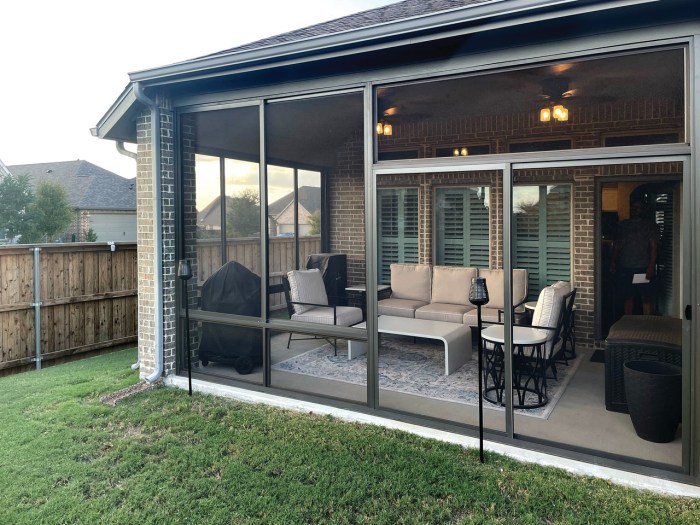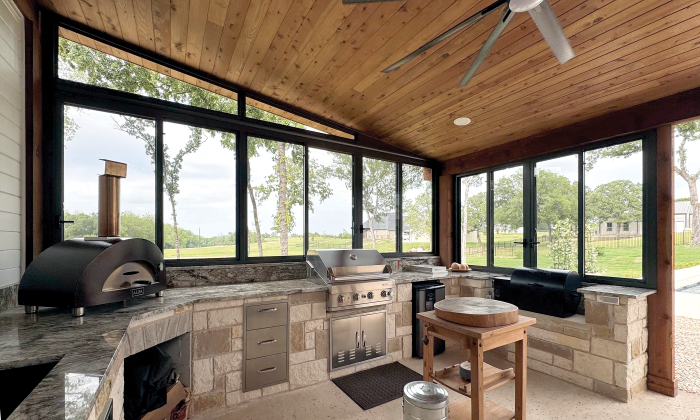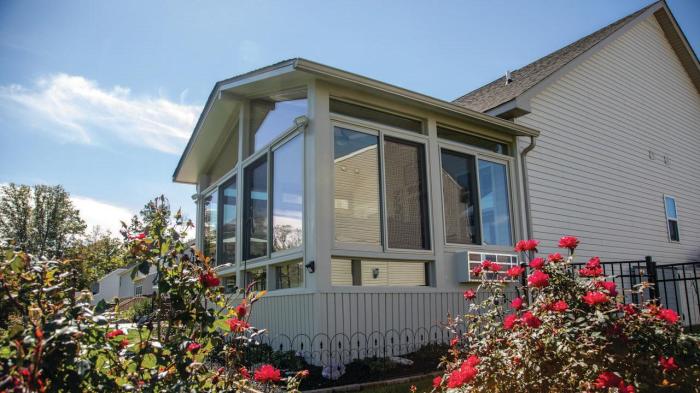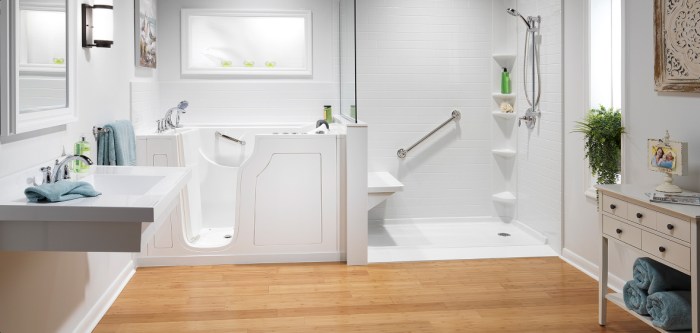Home renovation projects are exciting, but they can also be stressful and overwhelming if you don’t have the proper plan in place. This short guide will help you tackle the home renovation planning process with confidence. Here, we’ll walk you through how to define your project goals and how to vet and hire a contractor that will help you achieve those goals on your budget and timeline.
Step 1: Define Your Goals
Your home renovation project might have started out as a dream, but the most effective way to turn it into a reality is with clear goals. They’re essential to making all the decisions you’ll need to make along the way.
Know the Reason Behind Your Renovation
Get clear on the “why” behind your home renovation. Do you want to upgrade your home with modern finishes and energy-efficient appliances so you can capture a higher resale value? Or are you settling into your home and wanting to increase its comfort and functionality? Be specific. This will ensure your renovation team is on the same page and you’ll be grounded in all your decision-making throughout the process.
Understand Must-Haves vs. Nice-to-Haves
Unless you have an unlimited budget, you’ll likely have to make compromises on your home renovation checklist if things turn out to be pricier or take longer than expected. Think about what you must have as a result of the project, as opposed to what would be nice to have.
For example, perhaps you want to renovate your kitchen and include a large island, but the stone countertop you love is too pricey for your budget. What’s more important—the island itself or the finish? Knowing your priorities will allow you to stay on track with your home renovation planning.
Step 2: Outline the Scope and Timeline
No two home renovation projects are exactly alike, so it’s important to understand what you want done for yours and how long it might take to achieve that project goal.
Assess Your Home’s Current State
You might be planning a renovation project that is merely cosmetic, but there may be underlying structural issues that must be addressed first. To avoid wasting money and time, it’s important to have a realistic assessment of your home. You might want to have a contractor come out for a consultation to determine if what you want can be done, or if there is a longer list of things that need to be fixed or replaced before you can accomplish the work you actually want.
Get Clear on a Project Timeline
Maybe you’re fine with “someday” as a timeline for your home renovation. Or maybe you want a new dining room in time for you to host family and friends for the holidays. Regardless, good work takes time, so working with a good home improvement company might require some patience and planning ahead.
Step 3: Set Your Budget
A home renovation budget isn’t just about how much money you have to spend; it’s about what that money can pay for in terms of labor, materials, and design. You may experience some sticker shock when it comes to the cost of certain items, but that doesn’t mean your renovation project is doomed. A reputable contractor or home improvement company that values the customer will work with you to figure out options for any budget.
Estimate Costs
Your renovation budget should reflect the entire scope of your project, from labor and material to permits and fees. You might go to your local home store to start pricing materials, but consider that there are other costs, like labor, permit fees, and junk removal. Start by getting a quote from a few remodelers to understand how much your project could cost.
Add a Contingency
Experts say to build in a 5% to 15% buffer in your budget for contingencies, emergencies, and other “surprises” that often come with home renovation. Keep in mind that although having extra cash is always beneficial, having a Plan B, C, or even D for your design choices can help. For example, you might be willing to buy less expensive floor tile if you’d prefer the more expensive kitchen appliances, or vice versa.
Plan in Phases If Needed
If you’re tackling a multi-room renovation, consider taking it one room or project at a time. Prioritize the parts of your home that need attention first, then focus your home renovation budget accordingly. For example, you might be dreaming of a kitchen remodel, but that drafty patio door needs to be replaced first so you can avoid high energy bills this winter. You might have to postpone your kitchen remodel for a bit longer, but you’ll still make progress on your renovation checklist with a new patio door. You’ll also prevent your home from becoming a constant construction zone filled with half-finished projects.
Bring your plan to life — explore real projects and book your consultation. Check Out Our Project Galleries
Step 4: Research Contractors and Compare Quotes
Choosing a contractor or home improvement company that’s right for your renovation goals is key to any successful project. While it’s always helpful to get recommendations from friends and family who have been in your shoes, you can research local pros as well.
Check Credentials and Warranties
A licensed contractor is one who is authorized to work and does so in accordance with industry standards and, most importantly, the local building code. It also means they meet the bonding and insurance requirements that will protect your home and the work involved in the project. Every state and municipality is different regarding contractor licenses and insurances, which include liability and workers’ compensation that will protect you should any damage or accidents occur during the work. When talking with contractors and home improvement companies, ask about licenses and insurance, as well as the warranty that covers products and workmanship.
Compare Quotes
You may get similar quotes from contractors, or you may get wildly different ones. While different prices could signal a red flag, it might also mean that you aren’t exactly on the same page as your contractor regarding the project. Perhaps you were imagining a more budget-friendly renovation with premade components, but your contractor is known for building everything by hand, and therefore the quote is much higher than you expected.
When comparing quotes, make sure you’re comparing apples to apples; that is, the same project scope to the same project scope. Keep in mind, though, that if the scope is clear, you can discuss other options for materials and finishes that can lower or raise the project price.
Evaluate Reviews
Just about everything can be reviewed online these days, from a new pair of shoes to a newly installed kitchen or bathroom. That makes your research as a homeowner easier—or does it? Customer comments can swing between rave reviews and awful ones, though, so you may need to take some things with a grain of salt. However, if you see that there’s a common concern for people to be disgruntled about, that’s where you may need to reconsider your contractor choices.
Don’t be alarmed if independent contractors don’t have as many—or any—online reviews like the bigger home improvement companies. They might have a solid word-of-mouth reputation instead. Keep in mind also that a reputable contractor will be willing to answer your questions as well as provide everything in writing. However, it is a red flag for any contractor to back down from questions or rely on verbal agreements alone.
Narrow Your Shortlist
It’s nice to have options, but you’ll need to shorten your list of potential contractors at some point if you want to move forward with your project. Some contractors on your list might be automatically eliminated due to their lack of availability. Others might come highly recommended by various friends and family and you’re willing to wait as long as it takes for a job well done. Once again, this is why it’s helpful to have some flexibility with your timeline in case you have to wait for room in your contractor’s schedule.
Step 5: Prepare for Renovation
Ready to move forward with your renovation project? Before the contractor and crew show up for the first day of work, here’s what you need to do.
Review Contract Terms
Everything should be in writing when it comes to the scope of the work and the warranties that are protecting it. Don’t let work begin until you have signed—electronically or on paper—a statement of work that covers the project’s scope, timeline, and payment terms.
Agree on the Method of Communication
In the digital age, communication goes beyond the telephone. Ensure you’re clear about the method of contact you and your contractor will use to avoid misunderstandings or miscommunications that could result in project delays.
Prep Your Home
You’ve been given an official start date for your renovation project. Now, it’s time to get your home ready for the contractors to do the work. In general, you’ll want to clear the area so that the contractors have plenty of room to work. Ensure that pets and family members are able to avoid or at least move safely near/around the work area. Don’t forget to store anything that’s fragile or valuable.
A contractor will likely have a prep list for you, and if so, don’t be afraid to ask questions if you are unsure of anything. If your project has a long timeline for completion, your contractor might request a walkthrough of your home to ensure that it is ready for the work. It’s worth shifting your schedule, if needed, to accommodate a visit. Anything that helps make the worksite safer and more accessible for everyone involved is beneficial, especially if it means completing your renovation on time and on budget.
Compare your options with confidence — request a free, professional quote today. → Get a Quote
Frequently Asked Questions
How long should I take to plan a home renovation?
You may have been dreaming of a home renovation for years now, but when you’re ready to commit to the work, it might only take a month or two to make plans. During that time, you’ll define your goals, collect contractor quotes, and finalize your budget (don’t forget a 10-20% contingency for emergencies or extras) so that everyone is ready for work to begin. If you’re unsure of anything, then take more time to plan; it’s better to change your mind about things before work begins than afterward.
How many contractor quotes should I gather before making a hiring decision?
The rule of thumb is three, so you have substantial notes to compare in terms of pricing, scope of work, and experience. You can certainly research more than three contractors, especially if you see any red flags with the contractors you’ve connected with, such as bids that seem too high or too low.
Can my contractor handle everything, or do I also need an architect, designer, etc.?
It depends on how complex your project is. For smaller updates that don’t require extensive building or designing, your general contractor may be enough. However, if you are doing a project that will completely transform the structure or design of your home, you’ll need an architect and a designer’s expertise.
When is the best time of year to renovate?
The best time of year to do a remodel varies depending on the type of project and the region, especially in terms of labor availability and weather. It helps to have a flexible timeline, or at least not be in such a rush that you can’t wait until a contractor’s slow season for best availability and pricing.


















































